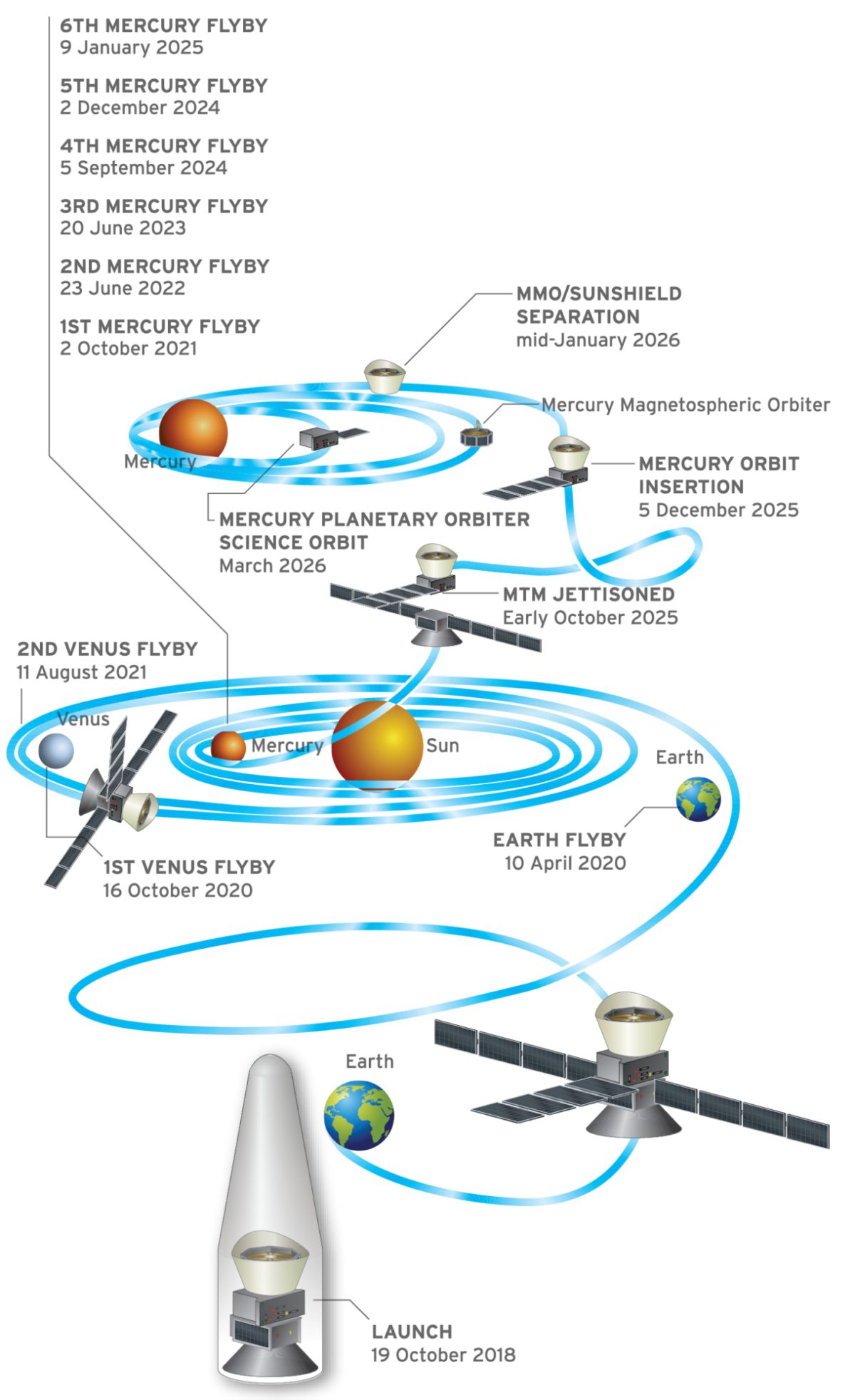Voyage to Mercury
The BepiColombo Mission Prepares for Launch
Elsa Montagnon is an expert in interplanetary spacecraft operations. She has engineering degrees from the Ecole Centrale Paris and Technical University of Munich. She joined ESA in 1999. Before becoming the BepiColombo spacecraft operations manager in 2007, she previously worked as flight operations system engineer on ESA’s Rosetta mission. She supported the Philae landing as deputy flight director.
Europe and Japan are ready to journey to Mercury together. The BepiColombo mission is a collaborative project between the European Space Agency (ESA) and Japan Space Exploration Agency (JAXA), launching in October or November 2018 on an Ariane 5 rocket.
Because it occupies an extreme position close to our Sun, Mercury plays an important role in helping scientists to develop theories of solar system formation. BepiColombo will continue the global study of Mercury started by Mariner 10 and continued by MESSENGER. But before BepiColombo can study Mercury, it faces a long journey. I am part of the operations team that will see the spacecraft safely there.
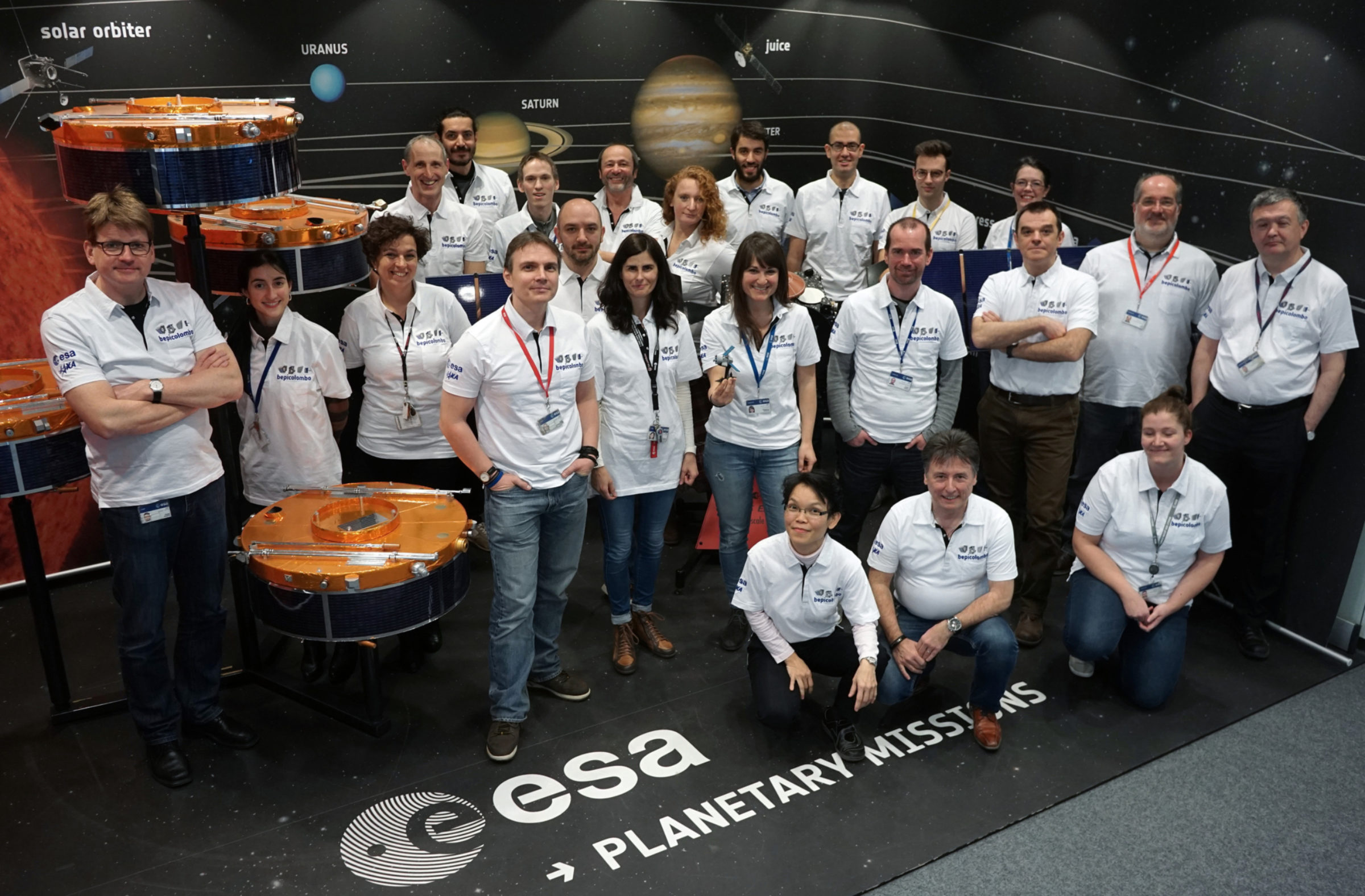
The BepiColombo mission will deliver two independent spacecraft to Mercury. ESA’s Mercury Planetary Orbiter (MPO) carries 11 instruments dedicated to the study of Mercury’s surface, interior structure, composition, exosphere, and magnetic field. Its radio science experiment will also perform a test of Einstein’s theory of relativity. JAXA’s Mercury Magnetospheric Orbiter (MMO, recently named “Mio” through a public contest) carries instruments mostly dedicated to the study of the magnetic field, waves, and particles in the space environment around Mercury.
To enable its journey to Mercury, BepiColombo has two other hardware components. The Mercury Transfer Module (MTM) is responsible for propulsion through the 7-year interplanetary voyage of the composite spacecraft. Equipped with its own set of solar arrays, power conditioning and distribution system, and chemical and electric propulsion, MTM is controlled by MPO’s computer. Another component, a protective structure referred to as MOSIF, will shield MMO from excessive solar heating until Mercury orbit insertion.
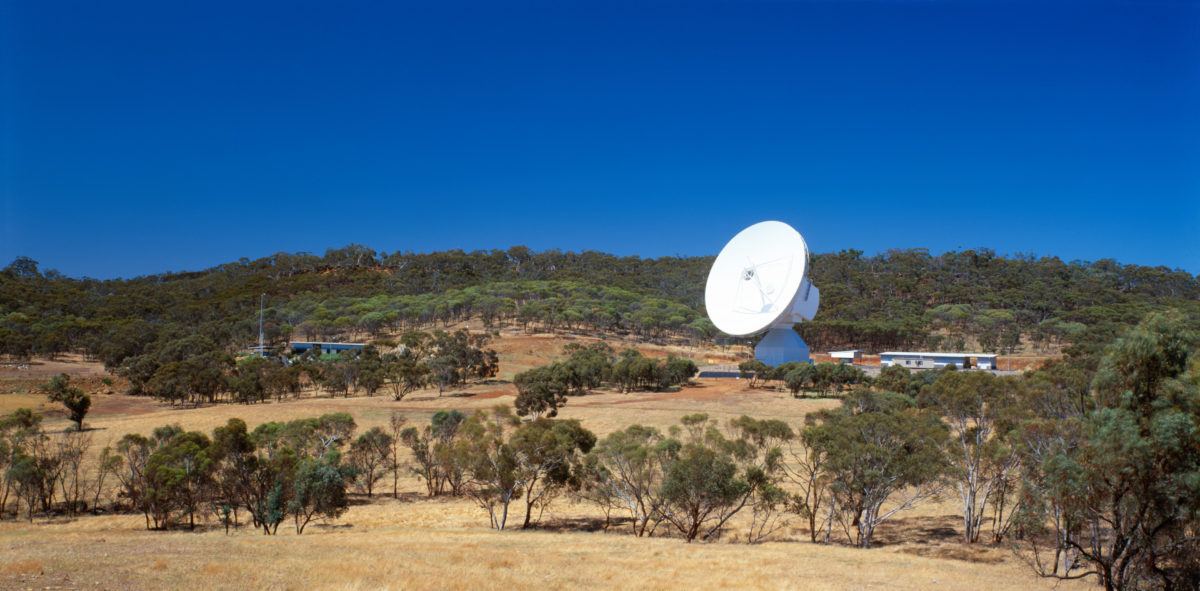
LAUNCH AND EARLY OPERATIONS
The first few days of the mission are intensely busy. About 40 minutes after launch, once the spacecraft separates from its rocket, it will make contact with us through ESA’s New Norcia communications station. BepiColombo will configure itself for interplanetary cruise by priming its chemical thrusters, establishing its orientation in space, and deploying the large MTM and smaller MPO solar arrays. The automatic sequence completes in about 1 hour.
Over the next 2.5 days, the Mission Control Team at the European Space Operations Centre (ESOC) will bring the spacecraft into its normal operating mode. The 100-person Mission Control Team includes experts on spacecraft operations, flight dynamics, ground software, ground station, and communications. The team works 24 hours per day for 3 days, in 2 shifts of 12 hours each. The team will activate and check out star trackers and reaction wheels, deploy medium- and high-gain antennas, and switch to using the medium-gain antenna, enabling faster telecommunications. A test maneuver using MTM chemical propulsion thrusters concludes the Launch and Early Orbit Phase.
NEAR-EARTH COMMISSIONING
As long as the spacecraft is close to Earth, round-trip communications are quick, and the Mission Control Team will work to perform a more in-depth checkout of the spacecraft subsystems and instruments. Planned to last about 2 months, this phase requires the continuous support of an 11-person Flight Control Team. Representatives of the project, industry, scientific payload teams, and JAXA will be present at ESOC to support specific operations.
The first 5 weeks will focus on the platform subsystems: data handling, attitude and orbit control, propulsion subsystems, telecommunications, and power. As part of this phase, communications will be moved to the high-gain antenna, which will serve as the primary means of communication throughout the mission. Each of the 4 electric propulsion thrusters will be test-fired for a few hours.
During this phase, we will check out the function of MMO’s subsystems and activate each science instrument on both MPO and MMO for a functional checkout. However, no campaign of scientific observations nor checks of simultaneous instrument operations will occur during this phase. Most of the remote sensing instruments on MPO face directly toward MTM during cruise, so they are unable to perform science observations. Still, the functional checkouts produce data that the spacecraft will return to Earth. Payload teams located at ESOC will process the data in near real-time and generate command requests if an instrument exhibits unexpected behavior.
At the end of the Near-Earth Commissioning Phase, ESA will convene a formal review. After the review, a large part of the industrial team that designed and built the spacecraft will be released by ESA.
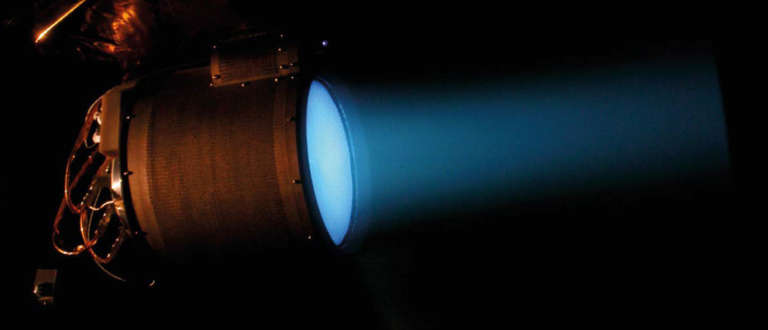
Solar Electric Propulsion
BepiColombo is the first ESA interplanetary mission to rely on solar electric propulsion, but many previous NASA and JAXA missions, including Deep Space 1, Dawn, Hayabusa, and Hayabusa2 have employed it to great success. The spacecraft’s solar panels generate electricity, which is used to ionize xenon atoms. The ion engine generates powerful magnetic fields that propel the positively charged xenon atoms out of the thruster at extremely high speeds, much faster than a chemical rocket expels its propellant. (The engine also emits a neutralizing stream of electrons so that the net charge of the spacecraft remains neutral.) The high speed of the xenon atoms makes ion engines more efficient than chemical engines, but an ion engine expels far less mass per unit time than chemical thrusters do. Thus, ion engines must be fired continuously over long periods of time—months to years—to accomplish their task of bending a spacecraft’s orbit.
CHALLENGES OF ELECTRIC PROPULSION
BepiColombo will be ESA’s first interplanetary electric propulsion mission. In preparation, we needed to develop new software and operations concepts. Our first use of MTM’s electric propulsion system (see sidebar at right) will occur as soon as near-Earth commissioning activities are complete. Two large electric propulsion periods will occur, each consisting of about 2 months. We refer to such periods as “arcs.”
As NASA’s ion-powered Dawn mission observed, standard methods of Doppler spacecraft tracking will not be precise enough for interplanetary navigation while we are using our low-thrust ion engines. The mission design requires precise orbit determination weekly for continuous optimization of the thrust level and thrust direction. Therefore, we plan to interrupt the thrust once a week to allow 8 hours of tracking with the high-gain antenna from one of ESA’s 35-meter deep space ground stations.
We will gradually phase in electric propulsion operations, regularly increasing the duration of uninterrupted thrust, until we reach the goal of only weekly interruptions. At the moment, only the first electric propulsion arc is being planned in detail. Each arc will be subject to a dedicated planning cycle, typically starting a year prior to the planned start of the arc as per reference trajectory.
INTERPLANETARY TRANSFER
The cruise to Mercury lasts 7 years and consists of a mixture of planetary flybys, electric propulsion arcs, and coast arcs. The baseline trajectory foresees 9 planetary swingbys at Earth, Venus, and Mercury. The first part, as the spacecraft cruises from launch to an Earth flyby, constitutes the “cold” phase of the mission, a period where the spacecraft will reach its maximum distance from the Sun, 1.2 AU (180 million kilometers or 110 million miles).
The 10 April 2020 flyby of Earth sets the spacecraft on a course for Venus. After the Earth swingby, the spacecraft will move closer to the Sun. Once it becomes closer to the Sun than Venus at 0.7 AU (100 million kilometers or 65 million miles), it enters the “hot” phase. This mainly affects MTM solar array operations.
The maximum-allowed temperature of this critical element of the BepiColombo spacecraft is 190 degrees Celsius (374 degrees Fahrenheit). For electric propulsion during the Earth-to-Earth arc, the array can be kept face-on to the Sun and still stay below this temperature. From a Sun distance of 0.7 AU inward, the array needs to be tilted away from the Sun to keep it from overheating.
Tilting the solar arrays will reduce the amount of electricity they can generate, and we must predict their performance in order to select what electric propulsion thrust level to command. While observing how solar array performance degrades with time, our predictions will be updated accordingly. During coast arcs, when we will not be firing the electric thrusters, the arrays will be angled away from the Sun in order to minimize their degradation.
The two flybys past Venus on 16 October 2020 and 11 August 2021 will change the spacecraft’s orbital plane to match Mercury’s and also drop the orbit perihelion much closer to the Sun, nearly to the distance of Mercury’s orbit. Long arcs of electric propulsion and 6 swingbys of Mercury will reduce the spacecraft’s relative velocity and reduce its orbit aphelion to get closer and closer to Mercury’s orbit. The orbit matching will be so close that BepiColombo would be weakly captured by Mercury’s gravity on orbit insertion day, even if it does not fire its rockets.
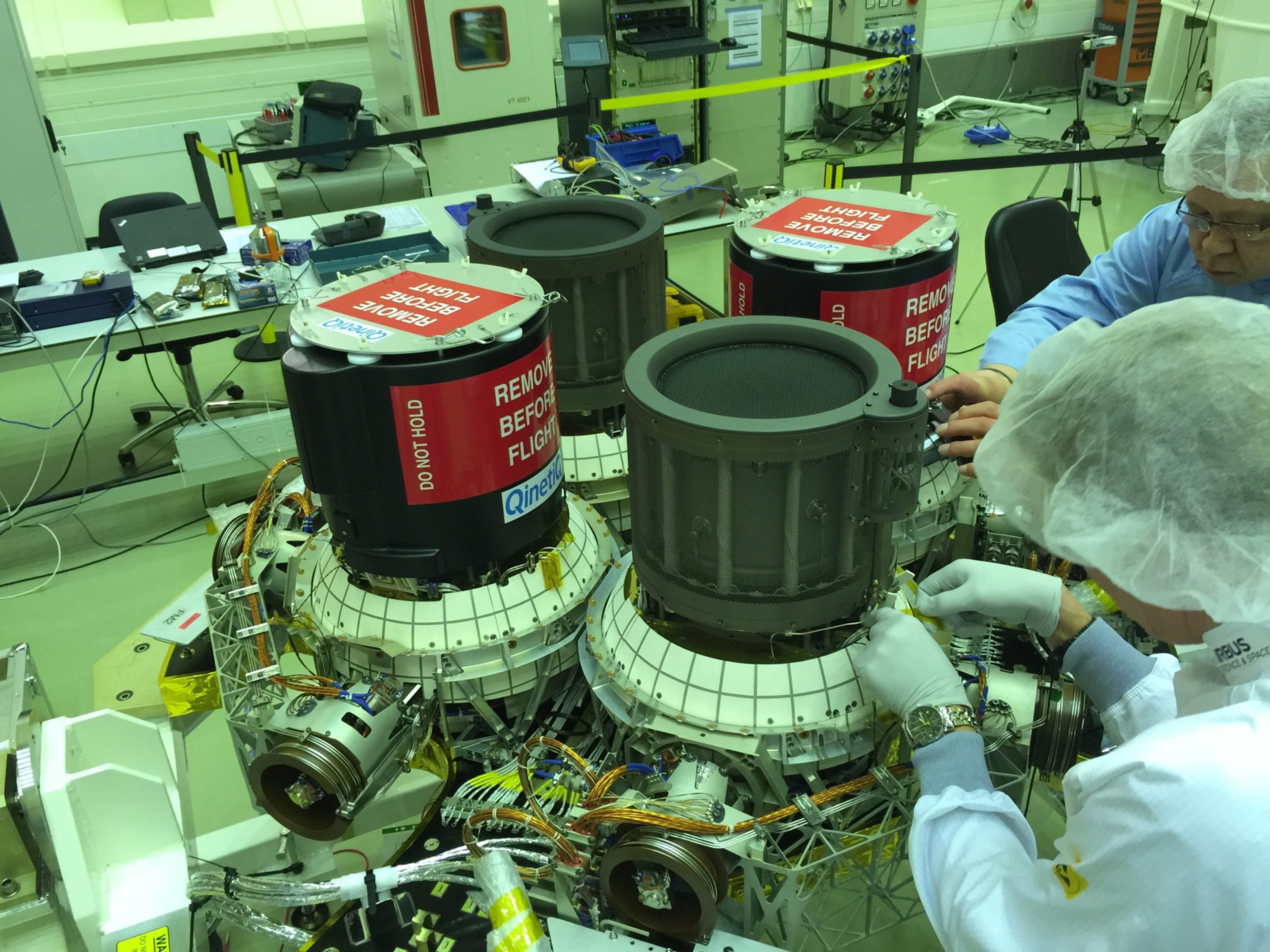
INSTRUMENT OPERATIONS DURING CRUISE
When the mission was first outlined, ESA did not plan to perform any scientific observations during the interplanetary cruise phase. The only baselined instrument operations were a radio science campaign during one of the solar conjunctions (when the Sun lies between the spacecraft and Earth) and a checkout every 6 months.
The views from most remote-sensing instruments are blocked during cruise by MTM, but we now plan to operate all other instruments on a best-effort basis during coast arcs and outside critical mission operations. In particular, the BepiColombo scientific community has expressed a strong interest in making observations during the 2 Venus swingbys. We have tight constraints on the orientation of our spacecraft that impose limits on what the instruments can do, but an initial assessment indicates that there are options to accommodate the scientists’ requests. We will work with the scientists to plan operations during the Venus flyby, beginning in mid-2019.
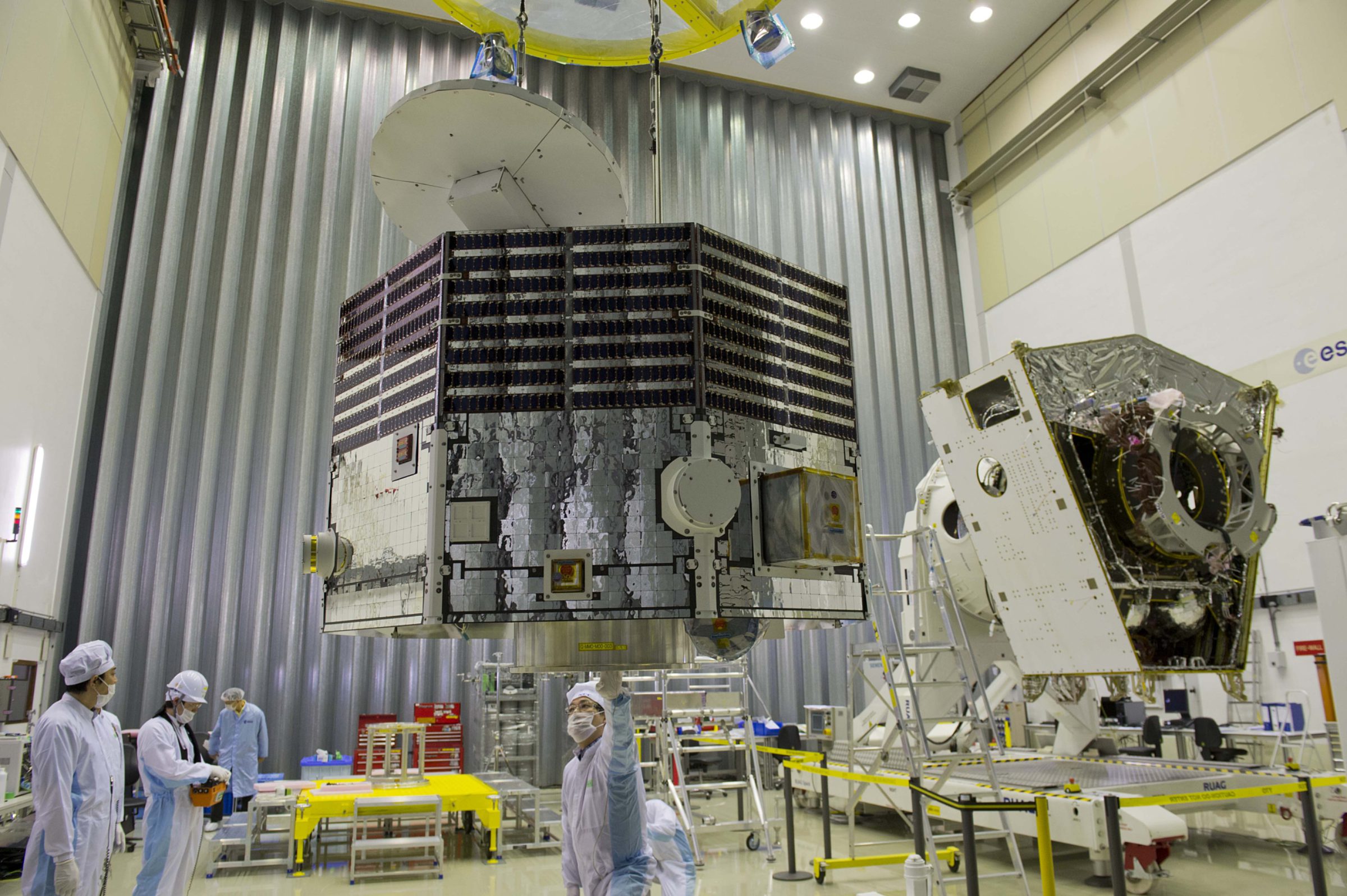
MERCURY ARRIVAL AND SCIENCE
Two months before Mercury orbit insertion, BepiColombo will jettison MTM, its work complete; BepiColombo will use a chemical thruster system for the rest of the mission. Orbit insertion will start with a rocket firing on 5 December 2025. We will command 14 more maneuvers over a period of 100 days to bring first MMO and then MPO into their targeted scientific orbits. The two spacecraft will separate once they have reached the planned MMO orbit, and then MPO will continue to descend. Shortly after MMO separation, MOSIF will be jettisoned.
This phase is operationally very intense. The first 6 weeks, from the first maneuver to reaching the MMO orbit, are mission critical. The spacecraft must reach MMO’s orbit before Mercury reaches aphelion, a period when the BepiColombo orbits will spend periods of every orbit eclipsed by Mercury’s shadow. Five maneuvers are required to reach the MMO orbit, spaced by only a few days. Because this period is so critical, we in flight operations will run this part of the sequence in a mode very similar to that of launch and early operations, with a fully capable backup ground station available for tracking and command uplink in case of adverse events at ESOC. All of ESA’s 35-meter deep space ground stations will be used, and NASA’s Deep Space Network will be asked to support us as well.
After a 30-day commissioning phase, scientific operations will finally start in April 2026. The nominal science mission duration is 1 Earth year, with a built-in extension capability of another year. Operations will remain critical and very intense due to the short orbital period of the spacecraft (2.3 hours), the need to continuously operate the 11 MPO instruments in order to maximize scientific coverage of the planet, and the scorching thermal environment where external surfaces of the spacecraft are expected to experience temperatures up to 350 degrees Celsius (660 degrees Fahrenheit). As during cruise, the MPO solar array needs to be kept angled away from the Sun at all times. A substantial portion of our work in flight operations is to command the spacecraft’s attitude profile (how the spacecraft and solar arrays point) during the normal operations mode and in any backup or safe modes. The spacecraft needs attitude updates no less frequently than every 20 days; the nominal plan foresees weekly updates.
Approved in 2000, the ESA/JAXA BepiColombo mission to Mercury is finally getting ready for launch. The spacecraft has been undergoing its final integration and test activities at Kourou in French Guiana since the beginning of May. At ESOC, the simulation campaign for the launch phase has started. The countdown is running…
Support our core enterprises
Your support powers our mission to explore worlds, find life, and defend Earth. You make all the difference when you make a gift. Give today!
DonateThe Planetary Report • September Equinox
Help advance space science and exploration! Become a member of The Planetary Society and you'll receive the full PDF and print versions of The Planetary Report.


 Explore Worlds
Explore Worlds Find Life
Find Life Defend Earth
Defend Earth




